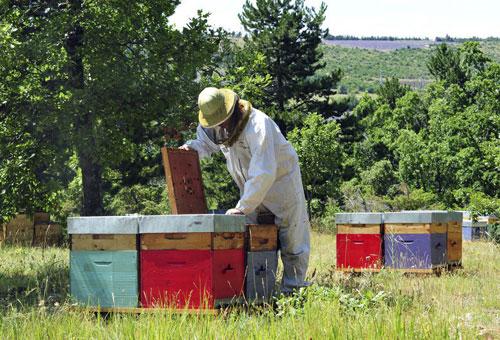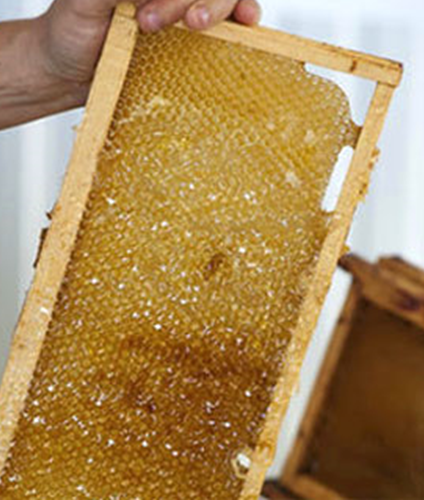Bees, Beekeepers, and ProShield® from Provence

With almost 165,000 beehives operated by some 4,500 beekeepers, Provence leads France in terms of number of professional beekeepers. Around 300 own between 150 and 300 hives each, and about 700 others own between 70 and 150 hives each.
From the garrigue to the maquis, from spring to autumn, the beekeepers harvest a wide range of honeys in Provence. The honeys are classified according to the plantations around which the bees are kept: Some are regarded as common, such as the lavender and all-flower types; others are regarded as more precious, such as the savory, arbutus, and thyme types. The bees may also leave areas of Mediterranean influence to visit flowers in the Southern Alps or flora from other regions, such as acacia in the Rhône valley.
The magic process of honey production requires no human intervention; it is the bees that make the honey. However, the role of the beekeepers is essential. The beekeepers’ job is to improve the living conditions of the bees by protecting them. The beekeepers also breed bees to produce honey, pollen, and royal jelly; they may develop and employ appropriate breeding techniques, such as early colony creation or the introduction of a queen bee.
In spring and autumn, beekeepers harvest honeys derived from a variety of plants. These products are known as all-flower honeys, and none are identical, making each tasting a new discovery. Summer is devoted to the production of lavender honey. In late autumn, the hives move to the coastal strips for wintering and some honey production.
Besides providing honey, the bees are also responsible for maintaining plant biodiversity. By pollinating, the bees ensure the reproduction and survival of over 80% of the flowering plants in this region. Pollination is an exchange of courtesies between the flower and the bee. The flower attracts the bee using bright colors or strong scents while also offering the bee pollen and nectar. The bee's passage over the flower and its foraging from flower to flower causes the pollination of the specimens visited.
After the bees collect the nectar, they transport it in their crops. From there, a transformation takes place: On contact with saliva, the nectar turns into a syrupy liquid. The bees then deposit this liquid into the hive’s cells to dry. Once all the water has evaporated, the bees close the cells to preserve the honey. When the time comes, the beekeeper simply collects the honey directly from the hive.

Carbohydrates are the major constituents (80%) of honey. Glucose and levulose, both monosaccharides, make up 85-95% of the sugars in honey. Honey is also rich in minerals such as magnesium, phosphorus, zinc, calcium, and iron. Low molecular weight acids such as gluconic acid, citric acid, oxalic acid, lactic acid, and butyric acid are also found in honey. On average, honey has an average pH of 3.9.
Bees primarily harvest pollen and nectar when foraging. In the meantime, they also collect the water and plant resin necessary to produce propolis. Propolis, or bee glue, is a resinous mixture that bees produce by mixing saliva and beeswax with exudate gathered from tree buds, sap flows, or other botanical sources. The chemical composition and nature of propolis depend on environmental conditions and harvested resources. Though employed as a sealant for unwanted open spaces in the beehive, propolis is only used for small gaps, while gaps larger than the bee space are usually filled with burr comb. The color of propolis varies depending on its botanical source, with dark brown being the most common. Above 19 °C, propolis is sticky; at lower temperatures, it becomes hard and brittle.
We make use of the spent propolis collected from local beekeepers by applying our unique extraction process to produce a potent multifunctional emulsifier: ProShield® Propolis.